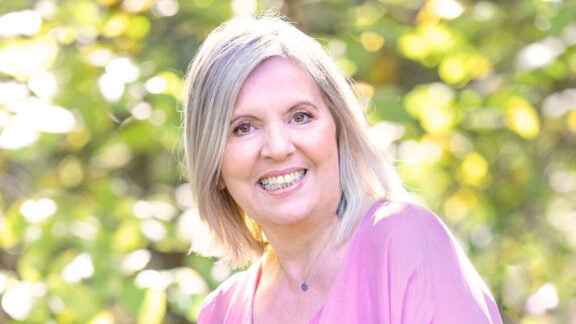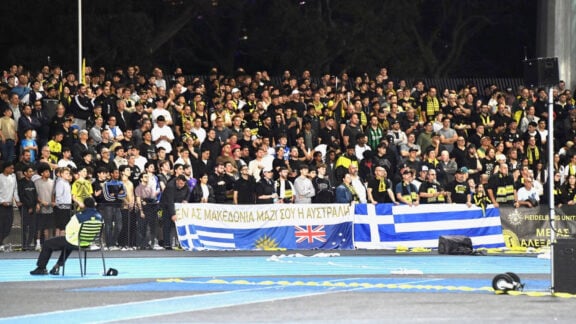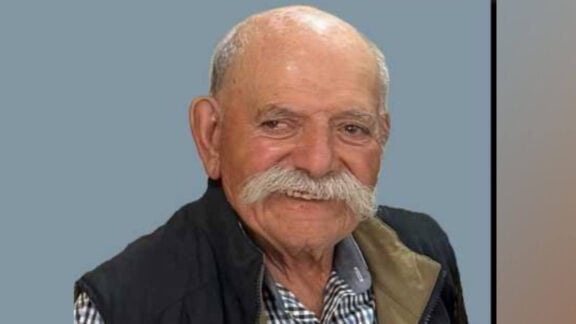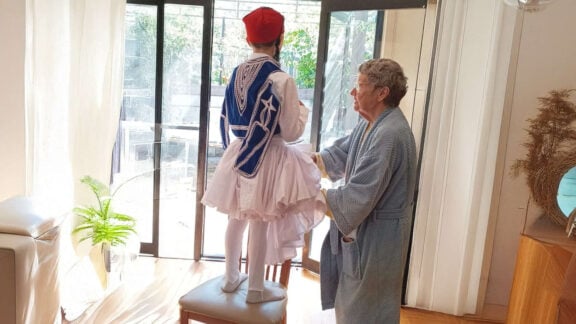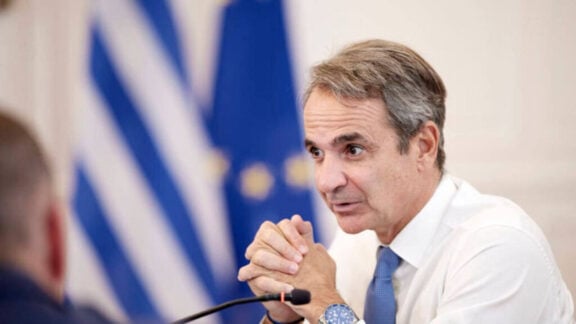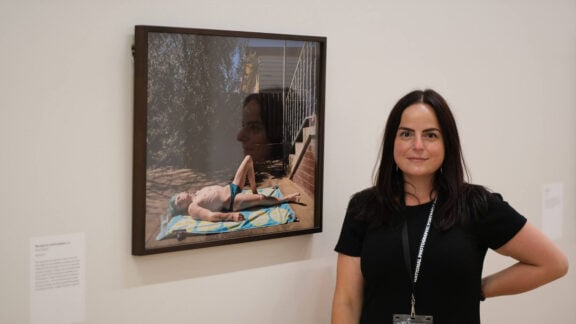In a special advance screening before its creators and supporters, an important new documentary was recently screened at Melbourne’s iconic Shrine of Remembrance.
The documentary is the work of filmmaker’s historian Dr Peter Ewer and John Irwin who were engaged by Melbourne’s Lemnos Gallipoli Commemorative Committee over many months to create this amazing new work.
Funded by the Australian Government’s Saluting Their Service Commemorative Grants program, the documentary tells the story of the Anzacs in Greece in 1941 in this 90 minute broadcast quality film. The documentary is unique in that it is drawn from 130 hours of interviews with campaign veterans themselves from the personal archive of Dr Ewer, augmented by more interviews from the personal archive of John Irwin as well as other archival video and photographs from archives across the world, including our own State Library of Victoria. Narration is provided by noted journalist Barrie Cassidy, whose father was a veteran of the campaign.

The audience at the advance screening included the filmmakers, Committee members and supporters of the project. Amongst the many dignitaries was the Greek Consul in Melbourne Emmanuel Kakavelakis. Also present were many members of Greek community and services organisations who had supported the project, including the Pammessinian Brotherhood Papaflessas and the Oakleigh Carnegie RSL Sub Branch. Most importantly many Greek campaign veterans’ families were also present, including the families of Syd Grant and Alfred Huggins whose still photographs are reproduced in the documentary itself.
Following a welcome to the Shrine from CEO Dean Lee, Committee President Lee Tarlamis OAM MP conducted the event as master of ceremonies, providing an introduction to the creation of the documentary. The screening was followed by brief presentations by the filmmakers Dr Ewer and John Irwin, followed by Catherine Bell and David Huggins providing a veteran’s families perspective.The event concluded with the State Library of Victoria’s Dr Kevin Molloy stressing the importance of the preservation of archives and the documentation such as has made this documentary possible.

Those attending the screening were clearly riveted and moved by the experience. The documentary reveals these then-young men and women reflecting in later life on the nature of their experience of the Greek campaign and the Greek people. They recount the warm welcome they received on their arrival in Greece. They reflect on the minimal training some received and the often disorganised defence they had to undertake. They talk of the terror they faced against the German onslaught. Moving descriptions of losing their friends as they stood in the defence of Greece, having to contain their emotions as they buried their comrades were they lay. The individual bravery of many is recounted, one veteran telling of one Maori soldier having sustained many bullet wounds but still taking part in the Allied rearguard across Crete to the embarkation port of Sfakia.
It will be no surprise that the documentary contains moving tributes by the veterans to the active support they received from the Greek people. Whether it is the welcome in Athens and across central Greece, with offers of ouzo, or the crying women offering sustenance to the Anzac troops as they made their retreat. We hear of the villagers of Mani assisting the Allied soldiers on the run from German capture, finding them accommodation and bringing them food at great risk to themselves. We also hear of the participation of Greek civilians in the defence of Crete, a role for which they paid a high price from the invader. As one Australia veteran – Don Stephenson – states movingly in the film that “this is why all in the 6th Division have a lot of time for the Greek”.

The documentary covers the many aspects of the campaign and many of its major engagements. The veterans talk of the battles at Vevi and Servia Pass, of Platamon, the Vale of Tempe and Brallos. Following the story of the evacuations from the mainland, we have them tell the story of their arrival on Crete and the Allied preparations for its coming defence. We here of the battles in defence of the airstrips, of the battles at Galatas and Perivolia as well as the long retreat to Sfakia – and the terrible reality of incarceration for the thousands of captured prisoners.
Two of the most moving accounts is that by Australian artillery officer John Anderson and his units valiant defence of Brallos Pass, holding up the advancing Germans and sustaining many casualties. It was great that representatives of his regimental association were present at the screening. The many New Zealanders present were no less moved by the account by the New Zealand veteran of his role in the bitter battle of Galatas, told in vivid detail. After he had helped in the neutralising of a German sniper in the church belfry, he remembered how the priest came out and gave him a drink!
The accounts included Anzac campaign veterans, officers and enlisted men, indigenous and non-indigenous, who volunteered for many reasons. One veteran recounted how they were less of an army than a very heavily armed civilian force, reflecting the volunteer nature of the Anzacs – unlike their conscript opponents.
Most importantly the documentary draws on the account of one of the Australian nurses who served in the Greek campaign. The films inclusion of veteran Mollie Edwards is another unique aspect of the documentary. Some of her contributions include her account of the support of the Greek people, the nurses sheltering from German aircraft on the road to the evacuation port of Nafplio and the dangerous boarding of the nurses on to the evacuation vessels in the harbour. Her account lends support to the photographs of Alfred Huggins, who served with an Australian Army Field Ambulance unit during the campaign. His photos of treating the wounded in the field and the burial of an Allied soldier with Mount Olympus in the background, add another element of poignancy to the film.

The documentary also explained the context of the Greek campaign, with Great Britain and the then British Empire seeking vital financial and material support from the then neutral but Allied-leaning United States. The timing of the commitment to send the Allied forces to Greece is explained as being crucial to the granting of that support. This was despite Allied military assessments that such a defence would be almost certainly doomed should the Germans invade. These assessments were not communicated to the Australian Government despite its troops forming a major part of the Allied forces sent to Greece. Such is the context in which the campaign was fought.
The audience included many members of Melbourne’s Greek community, including many of the Directors of the Greek Community of Melbourne itself. The Greek Community has been a strong supporter of the documentary and has supported its inclusion in the coming Greek Film Festival in Melbourne in October. Other screenings are planned for other states. Those readers in Melbourne are encouraged to book their tickets for the screening of the documentary in October when they become available through the Greek Film Festival 2024.
There will also are a number of subsequent community non-commercial screenings planned in cooperation with schools and community organisations. Those interested in such a screening should contact me at jimclaven@yahoo.com.au.

On a personal note, it has been my honour to have worked on the production of the documentary on behalf of the Committee as Associate Producer. I was able to contribute my own knowledge of the campaign and the battlegrounds as well as assist Dr Ewer and John Irwin in managing the project to a successful conclusion. I was particularly glad to be able to bring Barrie Cassidy to the project as its narrator. Credit also goes to the Committee’s Vicki Kyritsis in bringing her professional community engagement skills to the project team.
Finally, one of the moving comments on the night came from the veterans families who were present. For many there fathers had not recounted the detail of the war they had experienced. They may have left behind some photographs that had survived the campaign or some brief writings. But there were many gaps, leaving their families to wonder what they had gone through. Two sons of different descendants said the same thing after viewing the documentary – it had helped them fill in the gaps and given them a fuller understanding of their father’s service. A fitting tribute to both the project and the achievement of the filmmakers Dr Peter Ewer and John Irwin.
Jim Claven is a trained historian, freelance writer and published author, including his account of the Greek campaign, Grecian Adventure, published by Melbourne’s Pammessinian Brotherhood Papaflessas. Secretary of the Lemnos Gallipoli Commemorative Committee, Jim has worked on many commemorative projects included the creation of the Lemnos Gallipoli Memorial in Albert Park, the Australian Pier Memorial on Lemnos, the George Treloar Memorial in Ballarat as well as conducted a number of exhibitions, lectures and tours both in Australia and overseas. He can be contacted via email – jimclaven@yahoo.com.au

